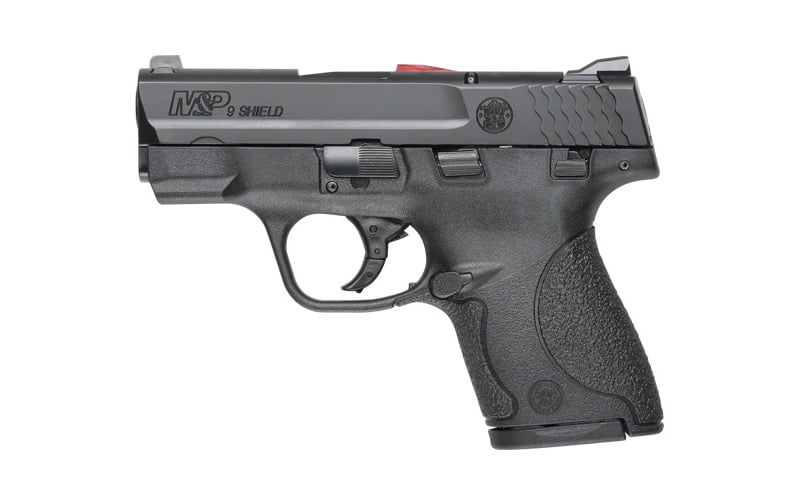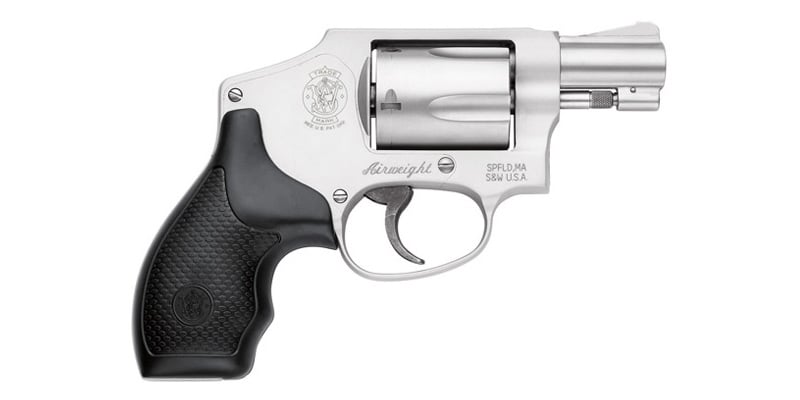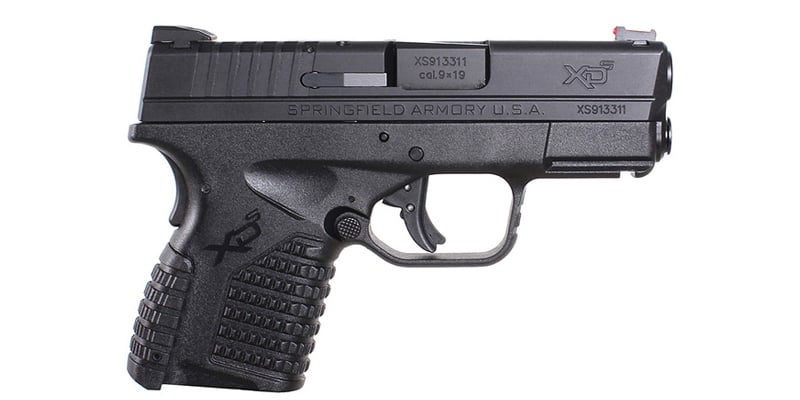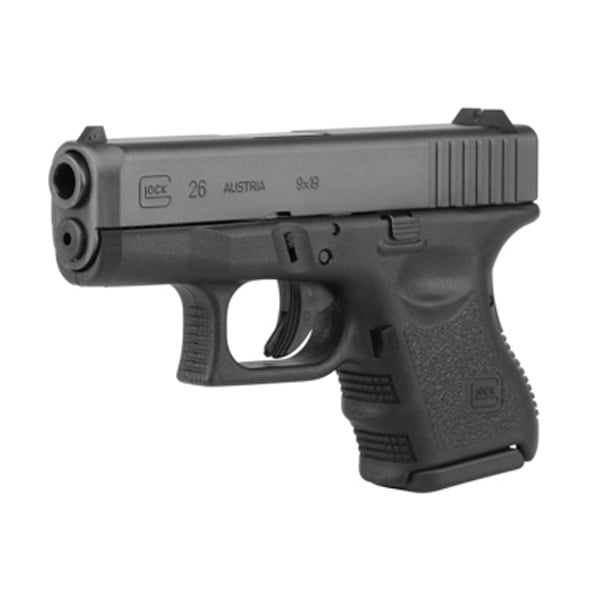
Last Updated on
By David Link
Now that we’ve touched on many of the regulations that are important for those new to conceal and carry, it is time to turn to the important task of self-defense pistol selection. In this second part, we’ll approach conceal and carry from the viewpoint of a somewhat inexperienced shooter. It is important to make this distinction since those who have been shooting handguns for many years will have a different set of requirements. Experienced shooters are more open to carrying larger handguns chambered in higher calibers, but those new to conceal and carry really shouldn’t be considering a handgun that fires larger rounds like .45 ACP. So let’s cover pistol selection for a new, somewhat inexperienced user looking to carry a concealed weapon.
It -Is- All About Size
There is much chatter about the right size for conceal and carry, and some shooters out there swear by larger handguns for their conceal and carry purpose. Yet shooters who choose larger handguns typically do so because they want the substantial stopping power that comes with a larger weapon. This is not to say that there aren’t smaller handguns in higher calibers like .45 ACP, but as you reduce barrel size, it can be quite the task to fire the larger round accurately. Instead let’s just focus on something anyone can easily gauge: their hand size. If you pick up a pistol you’re considering for conceal and carry, it should fit into your hand comfortably and you should be able to grip it easily. Don’t be ashamed if the handgun is too big for you and certainly don’t force it. If the handgun doesn’t quite fit, just keeping looking instead of settling. You should also be able to fire the trigger without applying an extreme amount of pressure, and you should be able to operate all the important parts without too much force like the slide or the release lever. Whatever you do, just make sure the handgun feels good in your hand. Confidence is paramount when selecting a conceal and carry weapon.

Think Light -And- Thin
Right alongside the recommendation of finding a suitable sized handgun is finding one that is lightweight. You don’t want to be lugging around a heavy gun day after day, and heavier guns have the potential to slow down draw times. Most conceal and carry specific handguns are designed to be lighter for this purpose. They come with terms like “airweight” or ultra-compact, and don’t make the mistake of thinking that lighter necessarily means less durable either. Most of the lightweight handguns you’ll shop can take quite a beating as well. But don’t overlook how thin the handgun you’re looking at is either. In revolvers this could mean ensuring the cylinder doesn’t create too much of a bulge when concealed. As for semi-auto handguns, a single stack magazine will go a long way to keeping the firearm slender. You really aren’t going to need the extra capacity that a double stack magazine offers anyway.

Easy To Find Sights
Another overlooked aspect of conceal and carry handguns is the quality of the iron sights on the firearm. You should be able to find the sights quickly and accurately even when the lighting conditions are less than ideal. Sure there are a wealth of aftermarket sights that can address this problem, but if you don’t like the sighting scheme in the first place, then you’re putting yourself at a disadvantage right out of the gate. This actually might be the first factor that sways you to select a revolver over a semi-auto handgun or vice versa. But when looking over your options, don’t forget about the sights on top of the gun.
Manageable Recoil = Better Accuracy
As we go down the list of aspects that make a good conceal and carry weapon, manageable recoil is among the most important. If you can’t control the recoil or are scared of the kick of the weapon, then you stand little chance of using it effectively in a tense moment like that of self-defense. The easiest solution is to select a smaller caliber, but don’t go too small. For our purposes, the three most obvious calibers are .380, .38 Special, and 9mm. As a go-to, 9mm is the perfect round for our purposes. Its recoil is manageable even for the most inexperienced shooters, and once practiced, it should be easy for a novice conceal and carry user to put several rounds on target with a 9mm. The .380 is a step down from the 9mm, but for circumstances where the shooter really is intimidated by recoil, the .380 represents another option. The .38 Special round is actually heavier than the 9mm round, but it is slower in flight than a 9mm. There are of course larger and smaller calibers that some use in self-defense, but suffice it to say that you should never go lower than .380 or .38 Special for self-defense purposes. As for larger calibers, it might be tempting to move up to something like a .40 S&W, but just remember that your first priority should always be putting rounds on the target. If you have a higher chance of landing a 9mm round in a tense situation, then go with the sure bet. Of course the .40 S&W or even the .45 ACP carries more stopping power, but only if it hits your intended target. Resist the temptation to carry a larger caliber until you’re sure you are ready for it.

Budget? Don’t Go Too Cheap
We think it’s wise to note that a brand name with a good reputation and history of reliable performance is an important factor in your search. We’re not saying you have to go top-tier when you select a conceal and carry handgun, but it’s also not advisable to scrape the bottom of the barrel. Stop and think why you’re buying the handgun in the first place. This isn’t just for some fun at the range on a casual Sunday. You need this firearm to work, period, if you’re ever in a dangerous situation. So while some may say that you don’t need to spend much on a self-defense weapon, we’d counter that a couple hundred bucks more is worth the added confidence you’ll get in a well known brand.
Which Type: Revolver Or Semi-Auto
We’ll end with the classic question that gets asked first even though it should be preceded by a lot of other questions like skill level and hand size. Which should you choose: a revolver or a semi-automatic handgun? Well first you should see which feels better in your hand. A revolver and a semi-auto will feel different, and just gauging the feel of both designs is a good place to start. What about reliability? Revolvers have and always will be point and shoot firearms. There’s little doubt that once you pull the trigger that the weapon will fire. As you can guess this makes revolvers the simplest choice as a conceal and carry firearm. Revolvers are also durable and stand up well with age even if they aren’t cleaned regularly (not that you should ignore regular maintenance). When in doubt about what to choose, the revolver is always the first on the list.
Semi-automatic handguns are by their very nature more complicated firearms. They have more moving parts and require a bit more maintenance than revolvers. But these days the old criticism that semi-autos aren’t as reliable as revolvers isn’t true anymore. Semi-autos have been refined and redesigned to eliminate their inconsistencies, so don’t shy away from one just because you’re worried about a jam. The up sides to semi-autos can make a substantial difference too. Reloading is easier with the clip design, and if you’re ever in a substantial firefight, the chances of reloading under stress are much greater. Generally speaking this isn’t even a must for basic conceal and carry, but it is worth noting. Depending on your chosen caliber, you will typically have a round or two extra to work with before you need to reload. These factors could give a semi-auto the edge in your evaluation process.

Take It For A Test Drive
The above guidelines we listed give you some information to work with in your search, but the best piece of info that you can walk away with is try the weapon(s) your interested in at the range or at least hold them in your hand before making a decision. The right conceal and carry pistol is largely a matter of preference, and there is no universal option. So head over to your gun shop or range and try out the models you’re interested in and then come back to us for the best savings possible on your conceal and carry handgun.




Leave a Reply